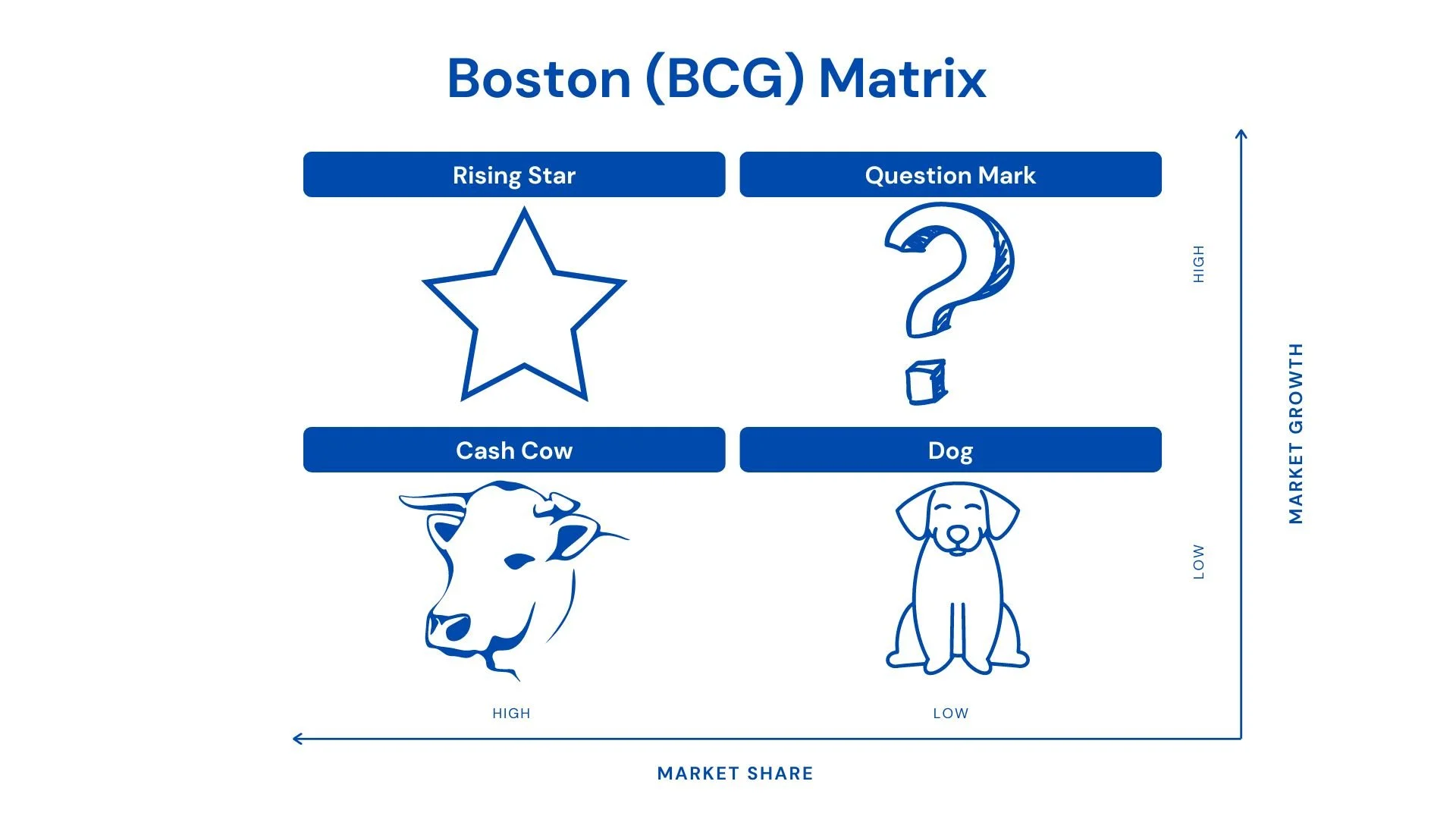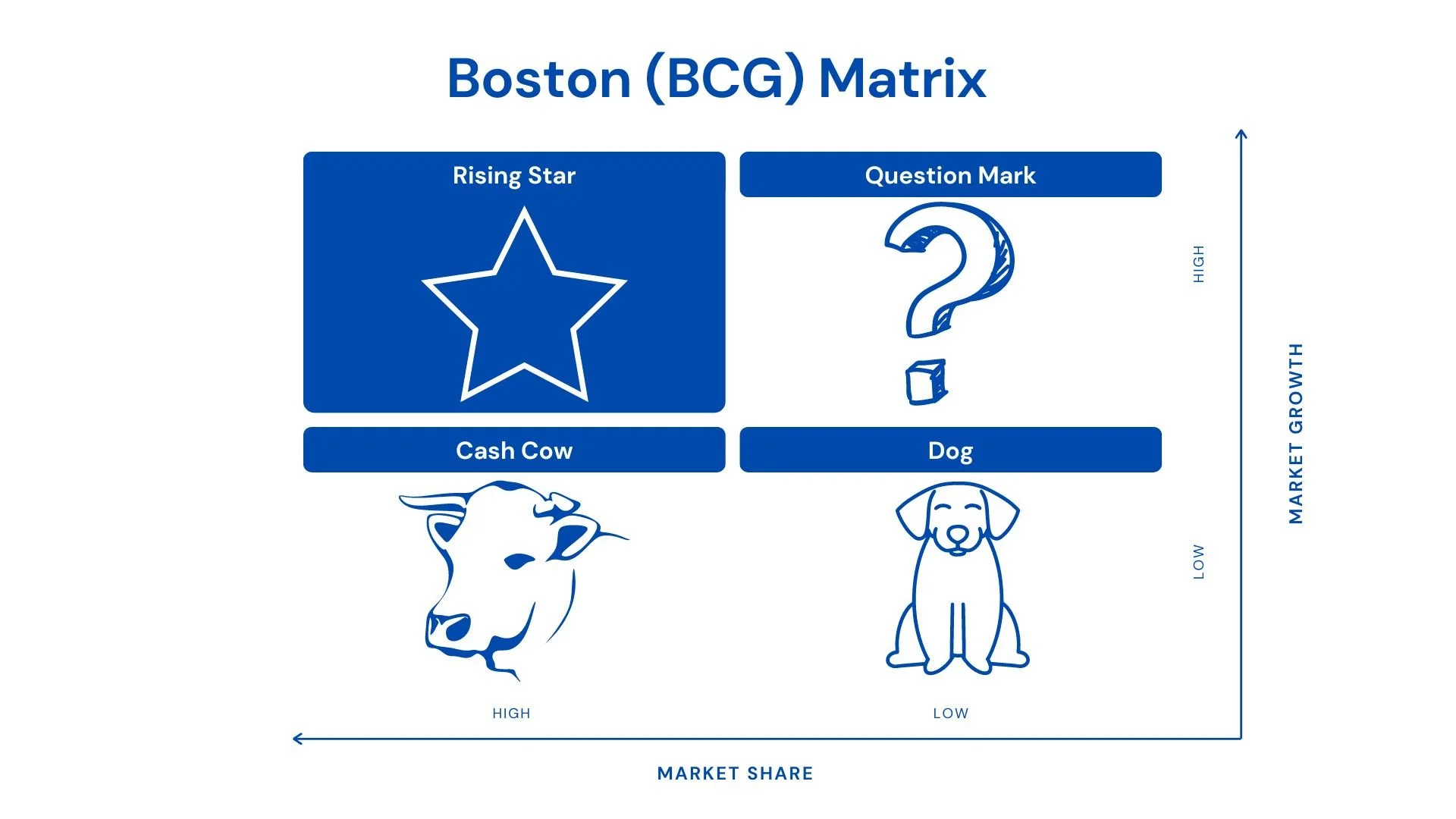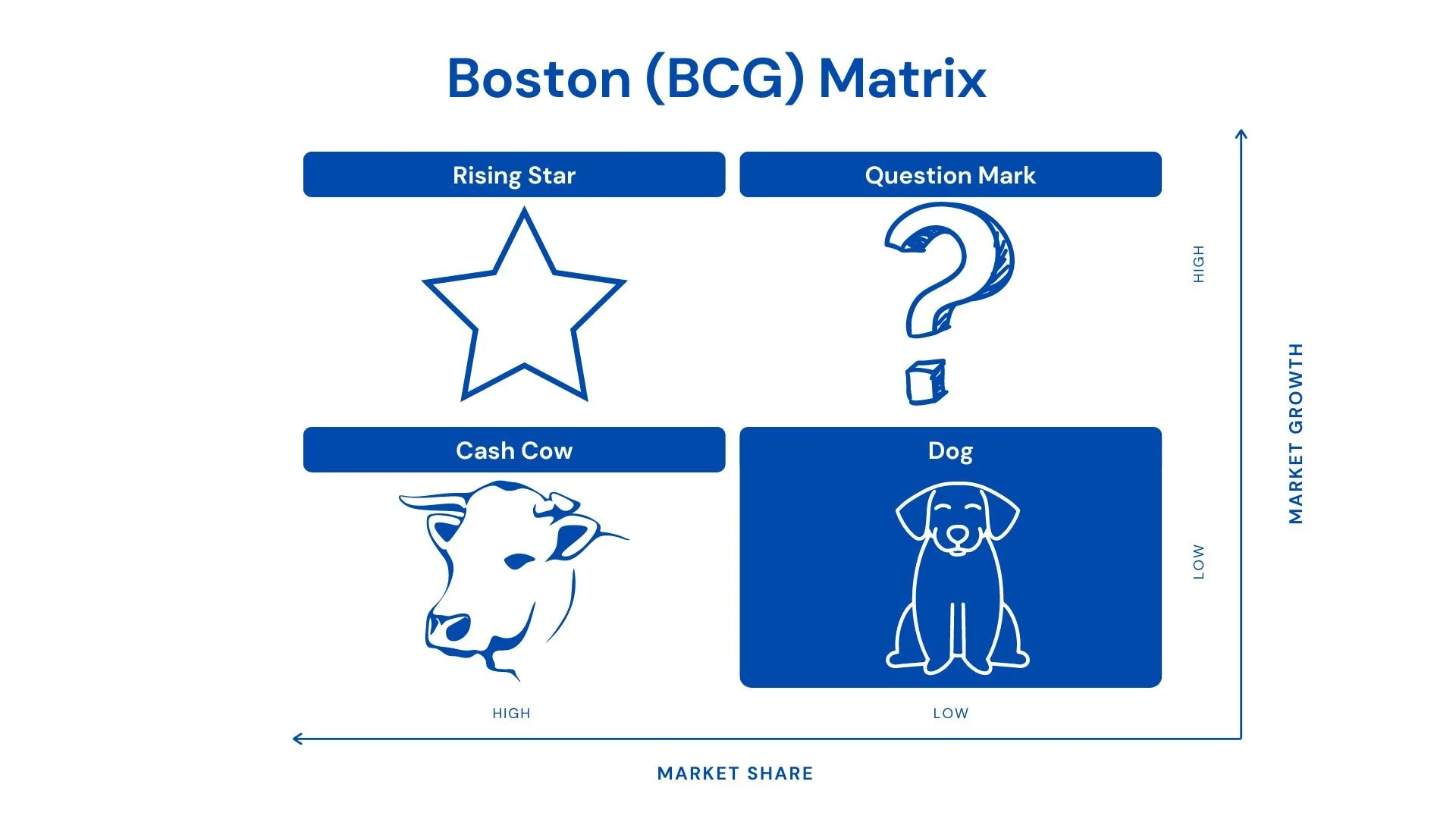B2 Boston Matrix
The Boston Matrix is a tool that can be used to analyse a product portfolio. Products within a portfolio can be categorised based on their market share (sales compared to competitors) and the growth of the market (potential customers). Firms may wish to use this tool to get an overview of their product portfolio to make decisions on what they plan to do with different products in their portfolio. Firms should aim to have a balance of question marks, stars and cows.
Question marks: Low market share and high market growth.
Rising star: High market share and high market growth.
Cash cow: High market share and low market growth.
Dog: Low market share and low market growth.
Question Marks
Question marks (problem child) are products in high-growth markets with a low market share.
Products in these markets have the potential for growth but require a lot of investment due to high competition. There is no guarantee that they will become stars and firms need to decide whether they can compete. If they do not become stars, they become dogs and will likely be removed from the market before making a profit.
Strategies: Extensive market research to establish which question mark products have the potential to become rising stars and which do not. Heavily invest in increasing the market share of those with potential and remove from the market those without potential. Investment may include heavy promotion and expanding distribution channels.
Example: McDonalds launched the Chicken Big Mac in 2022. It is still in sale at the beginning of 2023 but the future is unknown.
Rising Stars
Stars are products that have high growth in a market that is growing. These products have a strong market position in a growing market which means they have a lot of potential to make profits. As the potential of a growing market is appealing, it may attract competitors.
Strategies: Invest in marketing strategies such as advertising and distribution to maximise sales. Invest in relationship marketing techniques to increase brand loyalty to combat increasing competition.
Example: The McPlant burger is a vegan alternative launched by McDonalds in 2021. Heavy investment was required due to fluctuating popularity but the market is now beginning to stabilise.
Cash Cows
Cows or cash cows are products with a high market share in low-growth markets. These products are usually well-established on the market and have an existing customer base. As the customer base is established and the market is well aware of the product, marketing costs are low. High sales lead to economies of scale making this is the most profitable segment. Use profits from cash cows to invest in question marks and rising stars.
Strategies: Focus on brand image and customer satisfaction to increase repeat custom. Use the profits gained from cash cow products to invest in R&D in order to add new products to the portfolio. Conduct market research to make predictions of when the product will enter the dog quadrant.
Example: The McDonalds Big Mac was first launched in 1967 and is still popular today.
Dogs
Dogs are products with a low market share in low-growth markets. These may be question mark products that are unpopular or products that have previously been popular but have reached the end of their life span. Keeping unpopular products on the marke can damage brand image.
Strategies: Withdraw them from the market and/or reduce prices to sell off stock.
Example: McSpaghetti was launched in the late 1970s and was quickly withdrawn due to its unpopularity.




